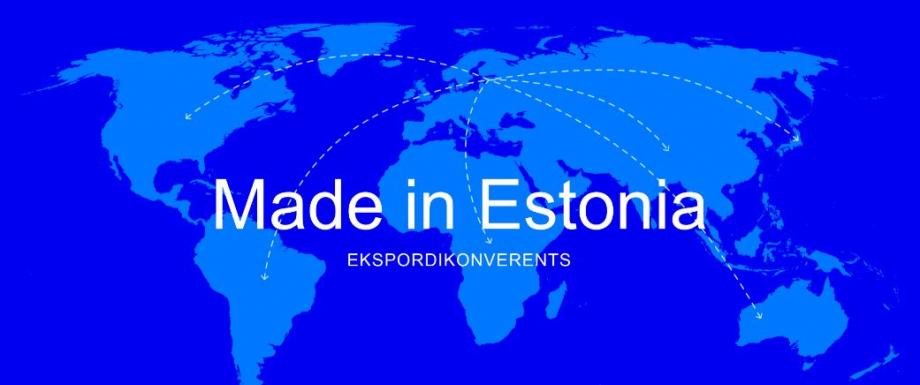
Estonian entrepreneurs and policymakers looked for opportunities to develop Estonian export
On 20 March, Estonian exporters, policymakers and representatives of the public sector met to discuss cooperation opportunities and future outlook of Estonian export and economic policy as well as to exchange experience. The conference was opened by the Estonian entrepreneurship and information technology minister Urve Palo.
According to Tanel Rebane, head of Enterprise Estonia’s (EAS) entrepreneurship centre, it is very important for entrepreneurs and the state to push the development of Estonian export together. “Today, Estonia is a country strongly focused on foreign trade and the share of exports reached approximately 80 percent of the GDP. Therefore it is very important that we look into the future of export already today and find new markets and opportunities to facilitate the development of economy,” said Rebane. “One of the main focuses of EAS is increasingly on offering support to ambitious Estonian companies that have export potential, this is done through advisory services of export counsellors, different training programmes, contact visits, supports, target market seminars and joint exhibition stands in foreign countries,” he added.
“We have many advisors in the country who theoretically and all-knowingly, but very generally express their opinion how everything could be done better. They emphasise the need to increase productivity and export goods and services with better additional value. But do they know what the exporters really need to achieve it in practice?” asked Mait Palts, director general of the Estonian Chamber of Commerce and Industry. “In theory, many could become world champions in some areas, but in practice very few achieve it despite of the work and efforts they have put into it. That is why we must always recognise, support and listen to the entrepreneurs who are committed to strive towards improved results, but do not become world champions, although they create jobs and help increase tax revenues through creating more additional value,” he said. Palts said that an export conference gives the state and entrepreneurs the opportunity to find cooperation opportunities that would really help Estonian exporters.
Liis Himma, head of Swedbank’s corporate banking said that Estonian exporters are doing well in the current economic environment: turnovers are growing and new export target countries are looked for. “However, we should not be resting in the comfort zone, because the world is rushing towards the fourth industrial revolution. Figuratively speaking, we should aim for the tiger leap in industry as well as generally in. But for that, we must put our backs together across sectors in order to create strategic cooperation and contribute jointly into improving Estonia’s competitiveness,” she added.
According to Urve Palo, minister of entrepreneurship and information technology, it is a good time in Estonian economy for investments in order to grow the company’s competitiveness. “Last year, Estonian exports showed record results and grew nine percent. This means that our companies brought in from other countries to Estonia 1.2 billion euros more than during the year before the last. In the conditions of economic growth it is the most reasonable time to invest in the future and increase the efficiency the production processes so that it would be possible to survive even when the times are not as good,” she said. “Exports always bring along risks and we from the state’s side are trying to be a good partner for the exporters. This year we are opening up several measures such as Kredex’s industrial loan, industry digitalisation analyses, support for participating in fairs and special events and we are developing the cooperation mechanisms of EAS foreign representatives and Estonian embassies,” said minister Palo.
In 2017, Estonian exports showed record results. Goods were exported for 12.8 billion and services for 6 billion euros last year. As compared to previous years, exports of goods grew by 8% and export of services by 10%. The biggest export partner of Estonia was Finland, followed by Sweden and Latvia. By groups, the most exported goods were machinery and mechanical instruments (26%), wood and wood products (11%) and mineral products (10%). By types of services, the most exports were in private travel and sea transport, 19% and 13% accordingly.
Export conference Made in Estonia was organised by Enterprise Estonia (EAS), Estonian Chamber of Commerce and Industry and Swedbank for the first time.
Estonian export statistics in 2017: ekspordikonverents.ee/wp-content/uploads/2018/03/Ekspordi-faktileht.pdf
Gallery of the conference is available HERE.


